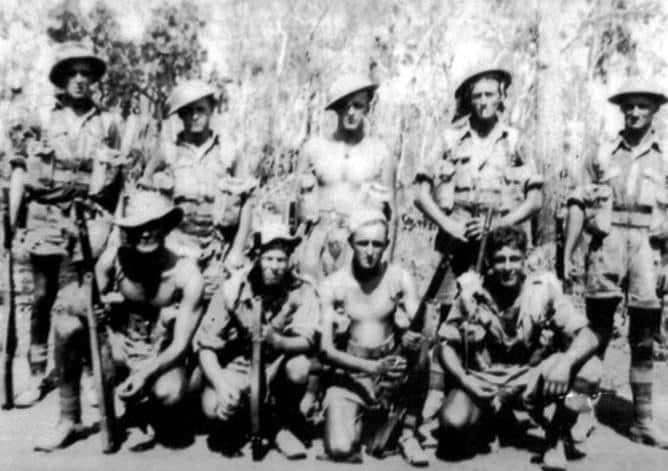The Royal Navy actively employed minors within their ranks and indeed joining the Royal Navy as a boy was an often unwritten prerequisite for a path toward an Officer commission.
Positions for minors began with the generic term Ship’s Boy which was open to young boys between the ages of 8 to12, although there was no established cut-off up to the age of 15.
There are records of boys as old as 15 joining ships as boys!
Imagine that, 15 was considered old?
Once a Ships Boy, further advancement could be obtained through various specialties.
A cabin boy assisted with the ship’s kitchen, as well as other duties, while a powder monkey helped in the ship’s armoury.
One of the highest positions for a boy was that of Officer’s Servant.
This position was usually reserved for young gentlemen from parents of English gentry who joined a ship between the ages of 12 and 15 and it was seen as a preparatory to becoming a Midshipman.
Prior service as a Ship’s Boy was recorded as sea service; officer’s servants could further credit their sea time towards the mandatory requirement for sea time in order to attempt the Lieutenants’ Commission Board.
When the age of sail ended, the position of ship’s boy became an actual Royal Navy rank known as Boy Seaman, which then also became an enlisted rank.
However, in 1863 when the Royal Naval College in Dartmouth was established, boys as young as Nine (9) years of age were eligible for entry for Officer Training as Cadet Midshipmen in the Royal Navy.

Cadet Midshipman Phillip Malet de Carteret RN
(Joined the Royal Navy aged 9 years. This photo was taken when he is aged 10)
Interestingly, an Australian-born boy named Phillip Reginald Malet De’ Carteret entered the Royal Naval College in 1907, aged 9 years, and went on to serve at Gallipoli when he was a Midshipman.

He was later killed in the Battle of Jutland when the Battleship His Majesty Ship (HMS) Queen Mary in which he was serving as a Midshipman was hit, exploded, and sunk within 5 minutes with 1,246 lives being lost of a total complement of 1,266.

He was the first Australian-born Naval Officer to lose his life in WW 1.
In 1912 the Australian Federal Parliament took the decision to establish a Naval College in Australia.
The objective was to train Australian-born young boys to become Naval Officers, as we had, and were continuing to rely on the Royal Navy to provide almost all of our officers.
Indeed, the Royal Navy continued to provide Officers for the next 50 years but in diminishing numbers following WW2.

The first Naval College was located at Osbourne House just outside of Geelong, VIC. It remained in Geelong until 1915 when HMAS Creswell located at Jervis Bay in NSW opened.

Before our Naval College was established in Geelong, VIC, our Federal Parliament had determined that, unlike the Royal Navy, our government would bear the cost of board and lodgings, uniforms & sports attire, tuition, and training.
Interestingly, right up until 1940, for Cadet Midshipmen in the Royal Navy, these costs were the exclusive responsibility of the family and not the M O D.
Under training, RANC Cadet Midshipmen were initially not paid.
Prior to the establishment of the RANC, the Royal Navy required all Navy’s of the Dominions to have their Officers dress the same as those of the Royal Navy as well as strict adherence to Kings Regulations and Admiralty Instructions (KR’s and AI’s).
The very first intake of 28 boys aged 13 began on the 2nd of January 1913 at Osbourne House just outside of Geelong in Victoria Included in this first intake was John Augustine Collins who went on to become Australia’s ‘First Naval Member’ or in today’s nomenclature, ‘Chief of Navy’, albeit with more responsibility as our Navy at that time was many times larger.
13-year-old Australian boys continued to be eligible to join the RAN as Cadet Midshipmen right up until 1960 when the minimum age increased to 17 and the word Cadet was dropped from the nomenclature.
In the 1940s and 1950s Cadet Midshipmen were paid up to 15 pennies per day!
But despite the generous pay scale, it remained one of the most competitive entry programs across all three of our armed services for 40 years, until discontinued. Hundreds applied each year for what usually was only about 20 billets or appointments as they were called.
This was because there was never any doubt whatsoever about the prestige associated with being a Naval Officer during the first half of the 20th century – often regarded by many as one of the most glamourous of professions in the world, and particularly for those officers of the Executive Branch.
They would be the only officers eligible to attain Admiral or Flag Rank following several sea-going commands.
It is very different in today’s Navy, however!
They were also the only Officers NOT to wear coloured stripes between their gold stripes on their sleeve cuffs up until 1960 when this was discontinued, except for Medical Officers, Dentists, Nurses, and Medical Administrators, who have retained their respective colours between their gold cuff stripes to this day. With the exception of many Officers from the Royal Australian Navy Reserve (RANR) and the Royal Australian Navy Volunteer Reserve (RANVR) from WW 1 through to some years following WW 2, it was only officers of the Executive Branch who were qualified to command ships at sea.
(Note: RANR & RANVR Officers who were given commands typically held Masters Certificates from their Merchant Marine Service)
These were officers with specialisations in Direction, Gunnery, Torpedo/Anti-Submarine (TAS), Communications, and Hydrographic Branches as well as Officers who had successfully completed the LONG Navigation course in the UK. The latter went on to become ships Navigators and some were later given commands.
All specialised Officer Training was conducted in the U.K.
Furthermore, only RAN Officers of the Executive Branch graduating as Midshipmen could ever command Capital Ships, I E., Battleships, Aircraft Carriers, Heavy Cruisers, and Light Cruisers.
Obtaining such a command, typically followed some 22 – 25 + years of service from age 13, with the officer having at least two smaller ship commands, having an exemplary record of service, and finally with approval of our Federal Parliament.
It can also be argued that the most outstanding Commanding Officers Australia ever produced came from the Cadet Midshipmen intakes, dating back to the first intake of 13-year-old boys in January 1913.
For example, Admiral Sir John Collins, Captain’s Farncombe and Wallace of both the 1913 and 1914 intakes went on to serve with distinction, commanding capital ships during both World Wars.

Captain Hec Waller on the open bridge of HMAS PERTH During the battle of the Sunda Strait – March 1st, 1942, HMAS Perth was sunk and Captain Wallace went down with his ship

History records them all as being exemplary ship handlers.
There are of course several more Officers post WW2 who are also remembered with this prestigious distinction of the best ship handlers of their generation including Admiral’s Anthony Synott, Gordon Crabb and later, Admiral Ian Knox RAN
In Part II, I will discuss Boy Seaman serving in the Royal Australian Navy dating back to its origins.
The author will also describe the early career of a 16-year-old who entered the RAN as a Boy Seaman in the early 1960s – the last such intake at Flinders Naval Depot, Victoria.




